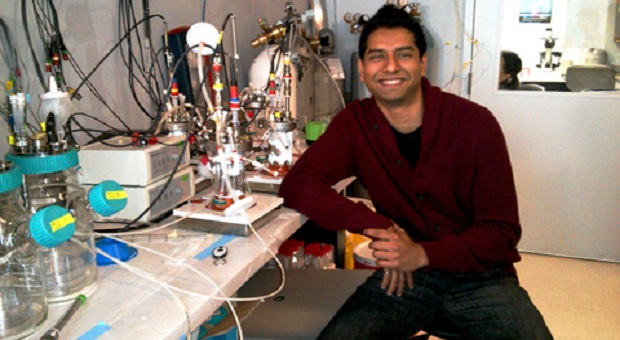
Researchers at the University of Toronto’s Institute of Biomaterials & Biomedical Engineering (IBBME) and the McEwen Centre for Regenerative Medicine have developed the first-ever method for creating living, three-dimensional human heart tissue that behaves like mature heart tissue.
Importantly, the method can be used to make models of both healthy and arrhythmic beating heart tissue. Findings were published in PNAS (Proceedings of the National Academy of Science) this week.
Arrhythmia is a relatively common condition in which the feedback of electrical pulses of the heart is interrupted, leading to heartbeats that might be too slow, too fast, or irregular. For some people, it can be a life-threatening condition. Having good, flexible models, such as this, can help advance strategies for treating heart disease.
Generally, beating human heart cells aren’t easily grown, and there have been barriers in developing models of heart disease on this small scale. The researchers, however, figured out the right mix of structures and cell-types associated with heart function to do this.
"We can now combine this compositional knowledge with electrical stimulation and mechanical stimulation to obtain a truly biomimetic system necessary for cardiac research," said corresponding author Associate Professor Milica Radisic, from IBBME and the Department of Chemical Engineering & Applied Science. She is also the Canada Research Chair in Functional Cardiovascular Tissue Engineering.
Radisic was named one of the "Top Researchers Under 35" by MIT’s Technology Review, and was awarded the 2012 Young Engineer Achievement Award by Engineers Canada. The research was performed under the supervision of Professor Peter Zandstra (IBBME), who was named a University of Toronto Inventor of the Year in 2011-12 and recipient of the 2013 Till & McCullough Award. He is the Canadian Research Chair in Stem Cell Bioengineering.
The study marks the first time that researchers defined and formulated the precise type and ratio of cell types that produce highly functional cardiac tissue.
"Hearts are not just composed of one type of cell," said fourth-year IBBME PhD Student Nimalan Thavandiran and first author of the study. But until now, researchers did not know how to mix different cell types in engineered heart tissue so the tissue would achieve the composition and maturity level of the native human heart...read more.
Image courtesy of the University of Toronto.

























